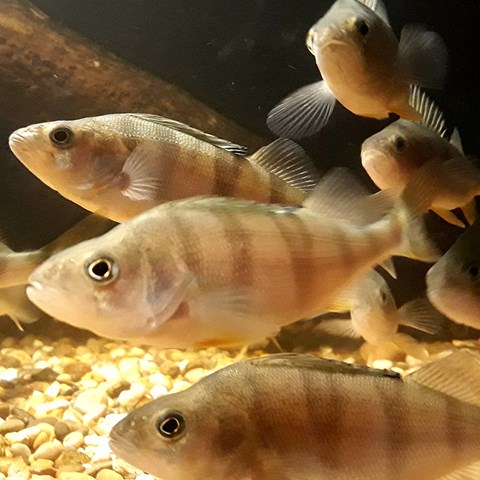Contact
Anti Vasemägi, Professor
Department of Aquatic Resources för
anti.vasemagi@slu.se, +46(0)10-478 42 77

A team of Swedish, Finnish and Estonian scientists have completed the world-first full sequencing of the perch (Perca fluviatilis) genome, which is three times smaller than the human genome (around one billion nucleotides) but still contains over 23,000 genes. The findings will enable researchers around the world to better understand the effects of natural selection on the genome of perch.
Perch is a very common species throughout Eurasia from the British Isles to Russia's Far East. The species is able to live in very diverse environmental conditions, including ponds, rivers, lakes and brackish water Baltic Sea. Perch is frequently the only fish species able to thrive in acidic dark-water lakes, where other fish species are not able to survive. Recent ecological work have also shown that perch reduces the emission of powerful greenhouse gas, methane, through changing the food-chain in humic lakes.
"Therefore, it is particularly important to understand the genetic mechanisms associated with adaptation to darkwater environment, where the emission of methane is high and perch is often the only surviving fish species", sais Anti Vasemägi, professor at the Department of Aquatic Resources at the Swedish University of Agricultural Sciences.
Anti Vasemägi sais that the sequenced genome represents a significant milestone.
"Compared to many sequenced fish genomes, the perch genome assembly is of high quality, serving as valuable resource for a range of questions helping us to understand how perch has become one of the most successful freshwater fish species in Eurasia "
In addition, perch is an important target for both recreational and professional fishermen, and a promising freshwater aquaculture species in Europe.
"The assembly of the perch genome allows researchers to map more accurately the regions of the genome that affect fish growth, maturity, disease resistance and other economically important traits," sais Dr. Mikhail Ozerov, the first author of the paper.
"Our next efforts will be focused on disentangling the molecular mechanisms and ecological consequences of humic substance-driven adaptation in perch," sais Vasemägi.
This study was funded by the Academy of Finland and the Estonian Ministry of Education and Research
Link to article:
Highly Continuous Genome Assembly of Eurasian Perch (Perca fluviatilis) Using Linked-Read Sequencing
Anti Vasemägi, Professor
Department of Aquatic Resources för
anti.vasemagi@slu.se, +46(0)10-478 42 77